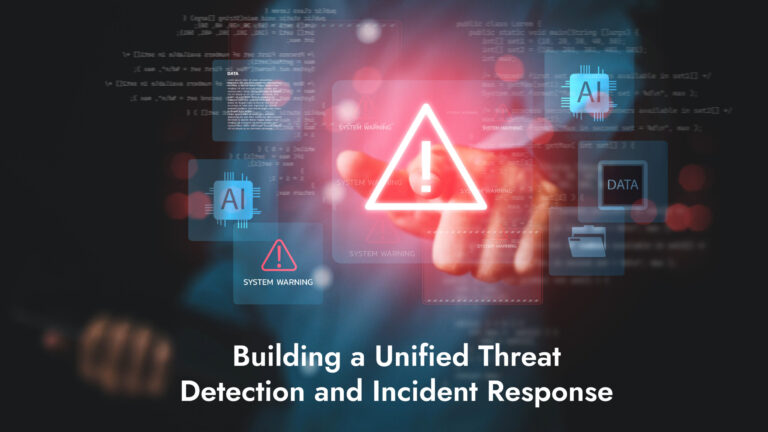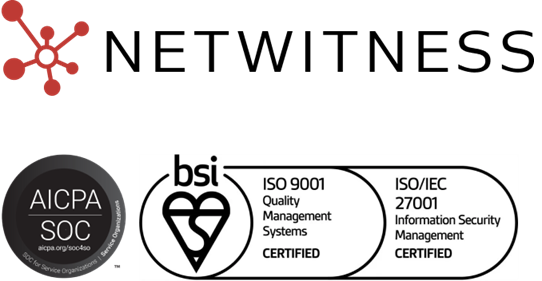Network Detection and Response (NDR) Technology has evolved as a foundational layer within enterprise security, delivering deep visibility and advanced threat detection that goes beyond the limitations of firewalls and static prevention tools. As attacks become more sophisticated and networks expand across complex hybrid and OT environments, understanding the key features that drive effective detection, investigation, and response is vital for CISOs and IT security leaders seeking the best NDR solutions for operational technology and enterprise networks.
Why Enterprise Networks Need Advanced NDR Technology
Modern networks encompass cloud, on-premises, OT, and IoT frameworks – all of which introduce visibility gaps and escalation points for attackers. Relying on logs or endpoint detection is insufficient for discovering threats like lateral movement, encrypted attacks, or device compromises invisible to agents. NDR technology closes these gaps, monitoring traffic in real time, using advanced analytics, and driving rapid threat investigation and response.
Healthcare and industrial OT environments have seen some of the fastest-growing threat volumes, emphasizing the importance of dedicated NDR platforms in high-stakes verticals.
Core Features of Modern NDR Solutions
Comprehensive, Real-Time Traffic Visibility
The best NDR solutions for operational technology and enterprise IT offer deep visibility into network traffic – across physical, virtual, and cloud architectures. By deploying sensors throughout the network, NDR platforms capture and reconstruct full-packet data, netflow, and metadata in real time, enabling:
- Elimination of network blind spots (north-south and east-west traffic)
- Detection of threats missed by perimeter defenses
- Central analysis across distributed, hybrid environments

Behavioral Analytics and Machine Learning
NDR platforms use behavioral analytics and machine learning to baseline normal network activity and identify deviations that indicate attacks, even those employing unknown techniques. Key advantages include:
- Detection of zero-day or signatureless threats
- Reduction in false positives through intelligent alert correlation
- Adaptive detection that evolves with organizational and attacker behaviors
Modern NDRs augment traditional rules-based detection with automated learning and model refinement, integrating findings with SIEM and EDR for greater precision and context.
Effective Threat Investigation and Response
A defining trait of the network detection and response platform is its facilitation of rapid, informed incident investigation and containment. Capabilities supporting this include:
- Intuitive visualization tools for mapping lateral movement or pivot paths
- Automated reconstruction of attack timelines and affected session data
- Guided workflows for containment, powered by AI and orchestration tools
Alert fatigue is combated by aggregating low-level signals into actionable incidents, allowing security teams to move decisively and slash mean time to respond (MTTR).

OT and IoT Security – Extending NDR Beyond IT
Operational technology (OT) environments present unique risks: legacy protocols, unmanaged devices, and limited agent coverage. Modern NDR networks tackle these challenges through:
- Agentless monitoring of OT, IoT, and shadow IT segments
- Deep protocol analysis covering industrial and proprietary communications
- Integration with industrial risk frameworks for critical infrastructure
This expands network threat detection into environments where endpoint and log-based security are impractical or incomplete.
Integration, Orchestration, and User-Centric Workflows
- Seamless integration with SIEM, SOAR, EDR, and threat intelligence platforms speeds deployment and workflow optimization.
- Guided playbooks help less experienced analysts extract maximum value, while experts benefit from deep visibility and forensics.
Outcome-Focused Posture: Reducing Risk and Complexity
- Centralizing analytics, detection, and response within a single platform alleviates tool sprawl and lowers operational overhead.
- Continuous visibility and analytics drive compliance, support breach disclosure, and meet incident reporting mandates (e.g., CIRCIA, NIS2).
How NetWitness NDR Fits into Your Security Stack
NetWitness NDR platform exemplifies how NDR technology delivers operational impact in enterprise settings. Key attributes in the NetWitness approach include:
- Packet-level capture and patented parsing: Real-time creation of rich metadata at the time of network capture accelerates both detection and investigation.
- Unified detection: Behavioral analytics, threat intelligence, and machine learning engines identify both known and unknown attacks, including those targeting cloud, IT, OT, and virtual environments.
- Integrated investigation and forensics: Automated timeline reconstruction, deep protocol support, and native decoding allow analysts to iterate rapidly during incidents.
- Centralized, role-based dashboards: Enable Tier 1 through Tier 3 analysts and forensic teams to collaborate efficiently, powered by AI-enhanced alert correlation and response recommendations.
By combining pervasive network visibility with advanced analytics, NetWitness NDR simplifies complex investigation tasks, reduces noise, and delivers actionable network threat detection at scale.

Conclusion: NDR Technology as a CISO Imperative
The evolving threat landscape, coupled with regulatory and board demands for minimized risk, requires CISOs to champion investments that offer both tactical protection and strategic visibility. Modern NDR technology delivers these outcomes, reducing blind spots, speeding incident response, and enabling enterprise teams to outpace emerging threats. As attackers target OT and distributed environments, the right NDR network strategy is not a luxury but an enterprise necessity.
Security leaders should evaluate the role of NDR within their current detection, investigation, and response architecture. NetWitness NDR stands out for delivering actionable insights, workflow automation, and unparalleled network visibility. Discover how it aligns with your enterprise’s security priorities.
Frequently Asked Questions
1. What types of threats can NDR network detect that other tools might miss?
NDR platforms identify lateral movement, encrypted attacks, credential abuse, and advanced persistent threats that evade signature-based or endpoint solutions by continuously baselining all network traffic.
2. How does NDR technology integrate with existing security investments?
Leading NDR solutions provide APIs and native integrations for SIEM, EDR, SOAR, and threat intelligence platforms, enabling unified detection and response workflows.
3. What are the deployment considerations for NDR in OT and hybrid networks?
Agentless sensors, deep protocol support, and flexible deployment options (on-prem, cloud, and virtualization) ensure NDR platforms secure both managed and unmanaged environments, including operational technology and IoT.
4. How does NDR technology contribute to measurable ROI?
By reducing breach dwell time, automating investigation, and lowering false positive rates, NDR improves analyst productivity, decreases incident costs, and supports regulatory compliance through auditable visibility.
5. What is the learning curve for security teams new to NDR technology?
Modern platforms like NetWitness NDR offer user-centric dashboards and guided workflows, minimizing ramp-up time and making powerful threat detection accessible for analysts of all skill levels.




